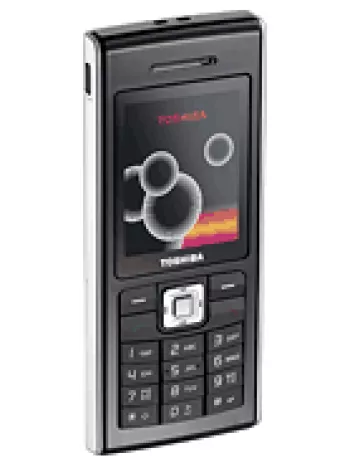
Overview of Toshiba TG02
The Toshiba TG02 was a smartphone released in 2010, known for its thin profile and array of capabilities typical for its time. With a focus on multimedia and connectivity, it appealed to users who sought a combination of style and functionality.
Design and Build
The TG02 was designed to be sleek and portable, measuring 126 x 66 x 9.9 mm and weighing just 119 grams. Its slim body and lightweight build made it easy to carry and handle, accommodating a mini-SIM format and available in both black and white. Despite its compact size, the device housed a reasonably large 4.1-inch display, capitalizing on the trend towards larger screens.
Display
The Toshiba TG02 featured a TFT screen capable of displaying 65K colors. With a resolution of 480 x 800 pixels at a 5:3 aspect ratio and a pixel density of 228 ppi, the display was crisp and suitable for a variety of tasks, from web browsing to watching videos. The screen made up approximately 57.5% of the device's front, balancing screen real estate with portability.
Performance
Under the hood, the TG02 was powered by a Qualcomm QSD8250 Snapdragon S1 chipset, complemented by a 1.0 GHz Scorpion CPU and an Adreno 200 GPU. This hardware configuration delivered decent performance for everyday tasks, though it might have struggled with more demanding applications by current standards. The device also came with 256MB of RAM, making it capable of running the Microsoft Windows Mobile 6.5 Professional operating system efficiently.
Storage
Storage capacity on the TG02 was modest, with 256MB of RAM and 512MB of ROM. However, it supported external storage via a microSDHC slot, allowing users to expand their storage capabilities substantially and store more media and applications as needed.
Camera Capabilities
The TG02 came equipped with a single main camera of 3.15 MP, featuring autofocus for clearer imaging. It supported video recording at 480p@30fps, enabling basic video capture. While not groundbreaking, the camera specifications were adequate for casual photography and video capture at the time. The presence of a selfie camera, albeit limited, allowed users to participate in video calls and capture self-portraits.
Battery Life
The TG02 had a removable Li-Ion 1000 mAh battery, an average capacity for devices from that era. It provided up to 275 hours of standby time on 2G and up to 220 hours on 3G networks, alongside a talk time of up to 5 hours on 2G and 4 hours on 3G. These figures reflected the device's need to balance functionality with battery efficiency.
Network and Connectivity
The device supported GSM and HSPA technologies, ensuring adequate connectivity across 2G and 3G bands. It included various bands: GSM 850/900/1800/1900 and HSDPA 900/2100, with a maximum speed of HSPA 7.2/2 Mbps. Wireless connectivity was further bolstered by Wi-Fi 802.11b/g, Bluetooth 2.0 with A2DP and EDR, GPS with A-GPS support for navigation, and microUSB 2.0 for charging and data transfer.
Audio and Multimedia
The TG02 featured a loudspeaker, but lacked a 3.5mm audio jack, which was a common issue for audiophiles looking to use traditional headphones. Lack of FM radio might have been a downside for users who enjoyed listening to live broadcasts.
Extra Features
A notable extra in the TG02 was its accelerometer sensor, allowing it to provide motion-based inputs, enhancing the user experience in both applications and games. The internet browser supported WAP 2.0/xHTML and HTML (IE), enabling a decent mobile web browsing experience.
Conclusion
The Toshiba TG02, with its combination of sleek design, essential features, and Windows Mobile 6.5 OS, was a well-rounded device for its time. Although discontinued, it represented a blend of early smartphone capabilities and the limitations of the technology available in the 2010s, providing insight into the evolution of mobile devices.
Key Features of Toshiba TG02
- Thin and Lightweight: Only 9.9 mm in thickness and weighs 119 g.
- Large Display: 4.1 inches TFT screen with a resolution of 480 x 800 pixels.
- Powerful Processor: 1.0 GHz Scorpion CPU with Qualcomm QSD8250 Snapdragon S1 chipset.
- Expandable Storage: Supports microSDHC card for additional storage.
- Decent Camera: Main camera with 3.15 MP and autofocus.
- Connectivity Options: Includes Wi-Fi 802.11b/g, Bluetooth 2.0, and GPS with A-GPS.
- Operating System: Runs on Microsoft Windows Mobile 6.5 Professional.
- Solid Performance: Adreno 200 GPU for handling graphics.
Disadvantages of the Toshiba TG02
- Discontinued product, lack of support and updates.
- Limited RAM (256MB) and internal storage (512MB ROM), limiting performance and application support.
- Uses outdated Microsoft Windows Mobile 6.5 Professional OS.
- No 3.5mm headphone jack, requiring adapters for standard headphones.
- Lack of a radio feature.
- Modest camera capabilities with only a 3.15 MP main camera and no dedicated selfie camera.
- Low video recording resolution at 480p only.
- The small 1000 mAh battery may result in limited battery life, with up to only 5 hours of talk time on 2G.
- Screen-to-body ratio of approximately 57.5%, larger bezels makes the device bulkier compared to more modern designs.
- Limited color depth of 65K colors on the TFT display.
- No support for LTE or modern network bands, limited to older GSM/HSPA technology.




View Also
More Phones
All Rights Reserved +13665 Phones © Mobilawy 2025

























